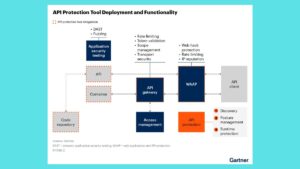What is Talent Acquisition, and Why is It Important?

In today’s competitive business landscape, attracting and retaining the right talent is more critical than ever. As organizations strive to achieve their strategic goals, talent acquisition has emerged as a vital function that goes beyond mere recruitment. It encompasses a comprehensive approach to identifying, attracting, and onboarding individuals who will contribute to the success of the organization. In this blog, we will explore what talent acquisition is and why it is essential for businesses of all sizes.
What is Talent Acquisition?
Talent acquisition is a strategic process that involves the planning, sourcing, recruiting, interviewing, and hiring of qualified candidates for job vacancies within an organization. Unlike traditional recruitment, which focuses on filling open positions as quickly as possible, talent acquisition is a more proactive approach that considers long-term workforce needs, employer branding, and candidate engagement.
Key Components of Talent Acquisition
- Workforce Planning: Understanding current and future hiring needs based on organizational goals and market trends. This involves analyzing workforce demographics, turnover rates, and skills gaps.
- Employer Branding: Building a strong employer brand that communicates the organization’s values, culture, and mission to attract top talent. A positive employer brand enhances the overall candidate experience and increases interest in job openings.
- Sourcing Strategies: Developing diverse sourcing methods to identify potential candidates. This can include leveraging job boards, social media, employee referrals, and networking events to build a talent pipeline.
- Candidate Engagement: Maintaining regular communication with candidates throughout the hiring process. Engaging with candidates early on helps establish relationships and keeps them informed about job openings and company culture.
- Assessment and Selection: Implementing structured interview processes and assessment tools to evaluate candidates’ skills, experience, and cultural fit. This step is crucial for making informed hiring decisions.
- Onboarding: Creating an effective onboarding program that integrates new hires into the organization and sets them up for success. A positive onboarding experience enhances employee retention and satisfaction.
Why is Talent Acquisition Important?
- Attracting Top Talent: In a competitive job market, organizations must distinguish themselves to attract high-quality candidates. A well-defined talent acquisition strategy allows companies to showcase their unique offerings, culture, and growth opportunities, making them more appealing to potential hires.
- Reducing Turnover Rates: Hiring the right candidates is essential for reducing turnover. A strategic talent acquisition process focuses on assessing cultural fit and aligning candidates’ values with those of the organization, leading to increased employee satisfaction and retention.
- Enhancing Workforce Diversity: A proactive talent acquisition approach promotes diversity and inclusion within the workforce. By implementing inclusive hiring practices and reaching out to diverse talent pools, organizations can benefit from a range of perspectives, driving innovation and creativity.
- Improving Employer Brand: A strong talent acquisition strategy helps build a positive employer brand. Organizations that prioritize candidate experience, maintain open communication, and foster a welcoming culture are more likely to be viewed favorably by potential candidates.
- Aligning Talent with Business Goals: Effective talent acquisition ensures that hiring practices align with the organization’s long-term objectives. By understanding workforce needs and trends, companies can build a skilled workforce that drives performance and achieves strategic goals.
- Boosting Productivity and Performance: Hiring candidates who are well-suited for their roles leads to higher productivity and performance levels. A strategic talent acquisition process emphasizes finding candidates who not only have the necessary skills but also fit seamlessly into the existing team dynamics.
- Adaptability to Market Changes: A robust talent acquisition strategy enables organizations to respond quickly to changing market conditions. By maintaining a talent pipeline and being proactive in sourcing candidates, companies can adapt to shifting business needs and seize new opportunities.
Conclusion
Talent acquisition is more than just filling open positions; it is a strategic process that directly impacts an organization’s success. By investing in a well-defined talent acquisition strategy, businesses can attract and retain top talent, enhance their employer brand, and align their workforce with their long-term goals. In an era where talent is the most valuable asset of any organization, prioritizing talent acquisition is essential for achieving sustainable growth and maintaining a competitive edge in the marketplace.
As the workforce continues to evolve, organizations must embrace innovative approaches to talent acquisition to ensure they have the right people in place to drive success in an ever-changing environment.






